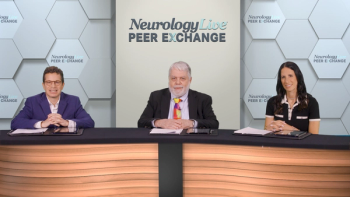
Pyrimidine Synthesis Inhibitors for RRMS
The advantages of using the pyrimidine synthesis inhibitor teriflunomide to treat relapsing-remitting multiple sclerosis.
Episodes in this series

Jennifer Graves, MD, PhD, MAS: We’ll come back and compare and contrast. All of these drugs have their advantages for some individuals and possible disadvantages for other individuals based on their personal history and situation. But let’s talk briefly about the other daily oral medication, teriflunomide. Dr Macaron, do you want to start us on that?
Gabrielle Macaron, MD: Yes. Teriflunomide is also one of the old medications, it now becomes an old medication for MS [multiple sclerosis]. It was approved by the FDA in 2012. It has been extensively used as a platform therapy since. It’s the active metabolite of leflunomide, which has been marketed for treatment of rheumatoid arthritis for a very long time. It has a specific mechanism of action as well. It’s going to inhibit the de novo pyrimidine synthesis, but the exact mechanism is unknown. It might involve a complex mechanism that we need to reduce the number of activated lymphocytes in the central nervous system.
The effect of teriflunomide was first demonstrated in the TEMSO trial, which compared teriflunomide 14 mg vs 7 mg vs placebo. A few years later, another phase 3 trial, TOWER, confirmed those findings. Efficacy wise, teriflunomide stands next to the injectables. It has a similar reduction of the annualized relapse rate by around 30%. It also reduced the confirmed EDSS [Expanded Disability Status Scale] worsening by around 30% at 3 and 6 months, but that was only seen in the 14-mg arm. It had quite a good effect on MRI lesions. It reduced the MRI lesions by 70% or 75%. Most experts usually use the 14-mg dose because of the higher efficacy seen in this treat treatment arm.
One of the advantages of teriflunomide is that it’s given once daily. That’s an advantage compared with dimethyl fumarate. It’s generally safe and well tolerated. Dr Shah mentioned her patient who had hair loss and was worried about losing her hair before her wedding. Although it seems like a benign thing, it’s an important thing for young women who don’t want to lose their hair. Alopecia is one of the adverse effects that isn’t dangerous, but bothersome for our patient population. Liver function tests should be monitored once a month in the first 6 months because there’s a risk of severe liver injury. That was mostly reported with leflunomide, but was also reported with teriflunomide. One adverse effect that’s worth mentioning is peripheral neuropathy. In the trials, 2% of patients mentioned having sensory symptoms in the arms and legs, and that was attributable to a teriflunomide-induced peripheral neuropathy.
Dr Graves, you mentioned pregnancy planning. We can’t talk about teriflunomide without mentioning the fact that it’s a pregnancy Category X medication. Teratogenicity was mainly seen in animal models. There were a couple of real-word studies of patients who got pregnant on teriflunomide and it wasn’t that bad, but it’s still completely contraindicated in pregnancy. For patients who are pregnant while on this medication, we usually recommend expedited drug clearance with oral cholestyramine or activated charcoal that we usually give for 11 days, which will help remove this medication. It has a very long half-life and can stay in the blood for a year, so we need to clear this medication for patients who get pregnant or have severe liver injury.
Jennifer Graves, MD, PhD, MAS: Thank you for watching this NeurologyLive® Peer Exchange. If you enjoyed the content, please subscribe to our e-newsletters to receive upcoming Peer Exchanges and other great content right in your inbox.
Transcript edited for clarity.
Newsletter
Keep your finger on the pulse of neurology—subscribe to NeurologyLive for expert interviews, new data, and breakthrough treatment updates.



























